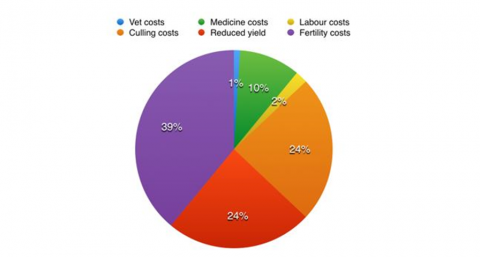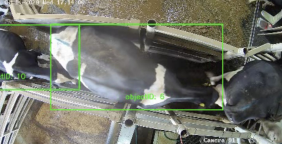Erw Fawr Project Introduction: The CattleEye project
Video analytics technology has seen rapid advances in recent years. The availability of this technology has created an opportunity in the dairy industry to harness the benefits of a deep learning-based video analytics platform. Such a platform can utilise visual data to derive novel insights about the animal that could, in turn, be used to more efficiently manage livestock and provide consistent evidence of animal welfare standards. This would represent a step change from existing livestock data collection systems which either rely on the farmer to manually enter data or in the case of sensor technology such as cow collars and pedometers, that require substantial manual commissioning.
CattleEye has developed a deep learning cloud based Artificial Intelligence platform designed to interpret visual imagery of livestock from industry standard CCTV web cameras. It will autonomously identify cows exiting the milking parlour from their biometrics and markings and register daily mobility and body condition scores. These will be fed directly to the farmer who will then take appropriate action, guided by project lead Professor Georgios Oikonomou from the University of Liverpool. The project can deliver substantially raised welfare standards through tracking and reducing lameness levels, addressing a fundamental social and consumer demand. Furthermore, reducing the financial implications of lameness on a dairy herd’s bottom line.
Typically, a case of digital dermatitis costs in the region of £75, a case of white line disease £300 and a sole ulcer £520. However a recognised average running cost of lameness per cow is estimated at £2.20/day.
Figure 1. Breakdown of annual costs of lameness (from Willshire and Bell, 2009).
Aim of the project:
- Assess the practical application and cow identification accuracy
- Reduce cases and associated costs of score 2 and 3 cows over a 6 month period through earlier foot treatment
- Improve animal welfare information recording
The CattleEye deep learning cloud based Artificial Intelligence platform will be used on the farm in order to detect early signs of lameness in the milking herd. This will allow for more targeted interventions (in collaboration with the farm’s foot trimmer and the University of Liverpool partner). The project will allow us to further validate the novel CattleEye technology and can lead to substantial improvements in animal welfare. Another aim of the project is to assess the potential for return on investment of such technologies from the reduction in lameness. Varying degrees of lameness and causes of lameness will have different financial impacts, however, Figure 1 describes a typical breakdown of annual costs of lameness with the majority being fertility, reduced yield and culling costs.
Update and next steps
A regular CCTV camera was installed during December approximately 4 meters above the cattle race exiting the parlour. This standard web based camera is connected to the internet and live footage will be interpreted by the cloud based CattleEye software. A certain amount of time will be required for the software to recognise each cow as she passes below the camera along with a cow ID confirmation exercise. Abiding to Covid-19 restrictions, the herd will be mobility scored before software is used to gain a snapshot of the current levels of lameness in the herd.
Figure 2. Image taken from the CCTV camera, installed above the cattle race exiting the parlour. This standard web based camera is connected to the internet and live footage will be interpreted by the cloud based CattleEye software.


